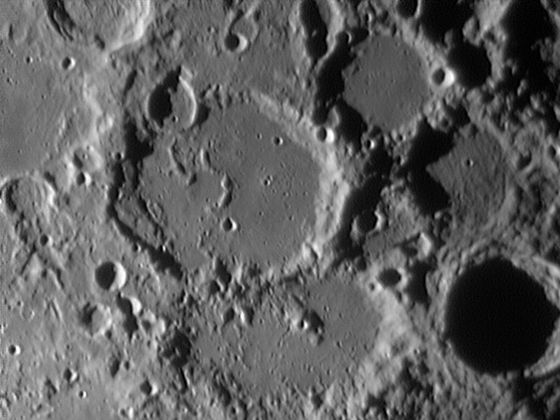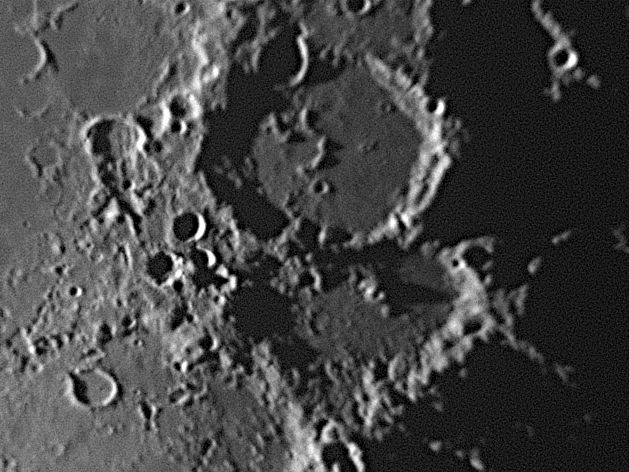

Purbach is an ancient crater, about 4,200 million years old, but must be younger than
Regiomontanus to the south. It is 120 Km in diameter and some 2400 metres deep.
Lacaille (spelt La Caille by the VMA) is 70 Km in diameter and almost 2800 metres deep, and the
floor is remarkably flat for such an old crater. Blanchinus is elongated, measuring
70 Km north-south and 55 Km east-west. Although the floor is fairly flat it has a number of
folds and small mountains. Werner is a much younger formation at around 2,000 million years.
Move your mouse over the picture to see the names of the various craters. The two pictures above make an interesting pair. They were taken when the phase of the Moon was almost identical (274° and 270°, or Days 21.8 and 21.4) and yet the lighting is quite different. Look at the shadows of the mountains inside Purback; the Sun is evidently higher in the sky in the first picture than the second. This is because the libration in longitude is very different on the two occasions. They differ by 10°, which has moved Purbach 10° to the right in the second picture compared to the first, putting it much closer to the terminator.

Day: 21.8
Date & Time: 6th September 2004, 04:43 UT
Libration: latitude -3° 26', longitude +3° 10'
Lunar Phase: 274.7°
Colongitude: 172.1°
Telescope: LX200-10 with X2 lens
Camera: ToUcam 740K
Capture: K3CCDTools. High Gamma, 1/50",
31% gain, 303 frames
Processing: Registax. 102 frames stacked,
wavelets 1-2 = 10.

Day: 21.4
Date & Time: 9th October 2020, 05:21 UT
Libration: latitude -1° 13', longitude -6° 58'
Lunar Phase: 279.4°
Colongitude: 177.5°
Telescope: LX200-10 with X2 lens
and IR-pass filter (>685nm)
Camera: DMK 21AF04
Capture: MX Capture. 1/54", gain 1023,
1758 frames
Processing: Registax6. 45 alignment points,
400 frames stacked per alignment point,
Gaussian wavelets Scheme 10 , gamma 1.4.
Home Back to SW Quadrant